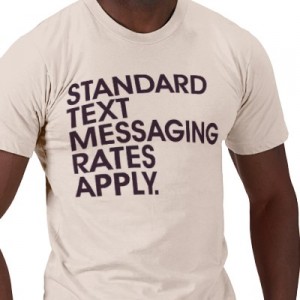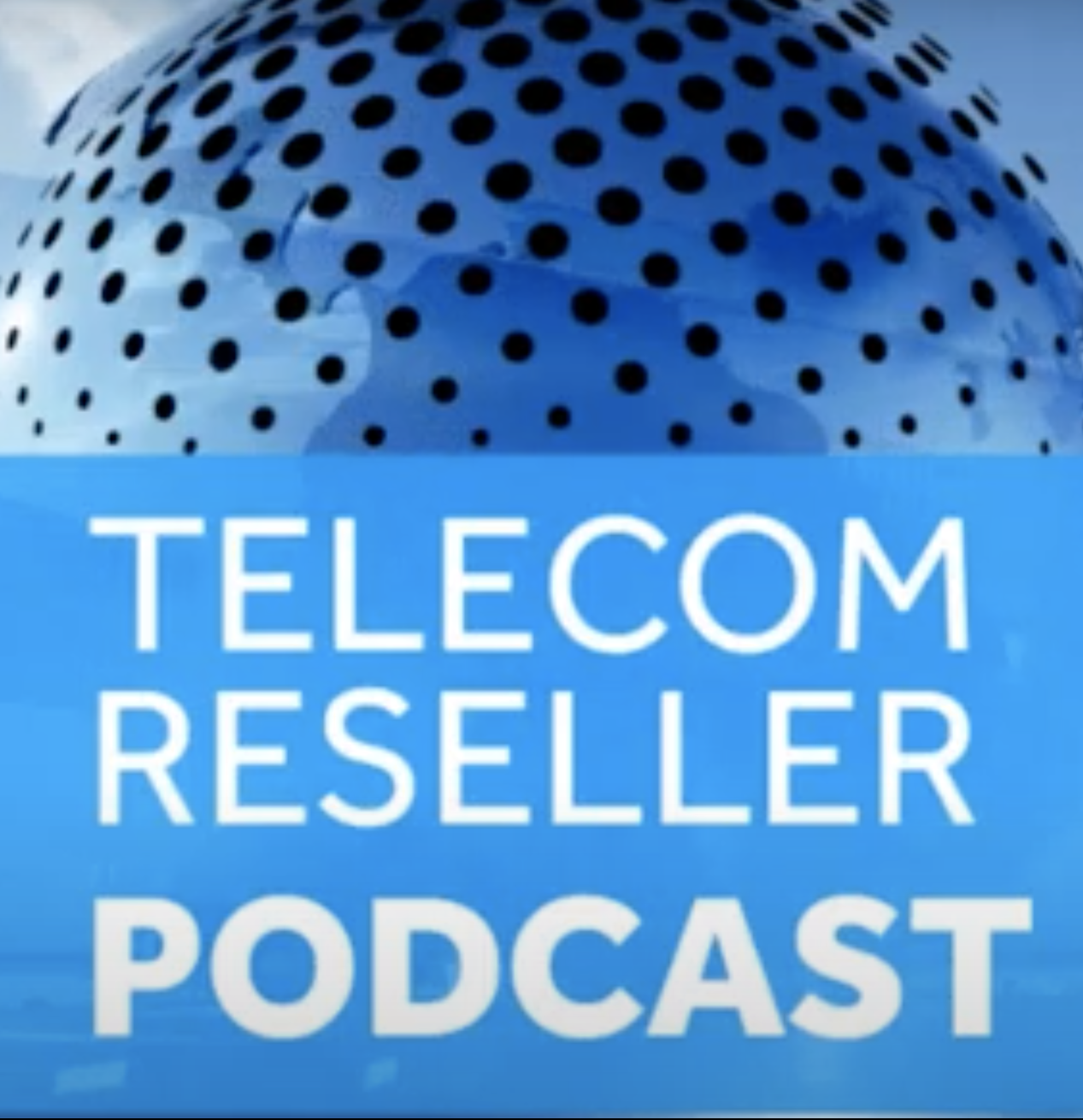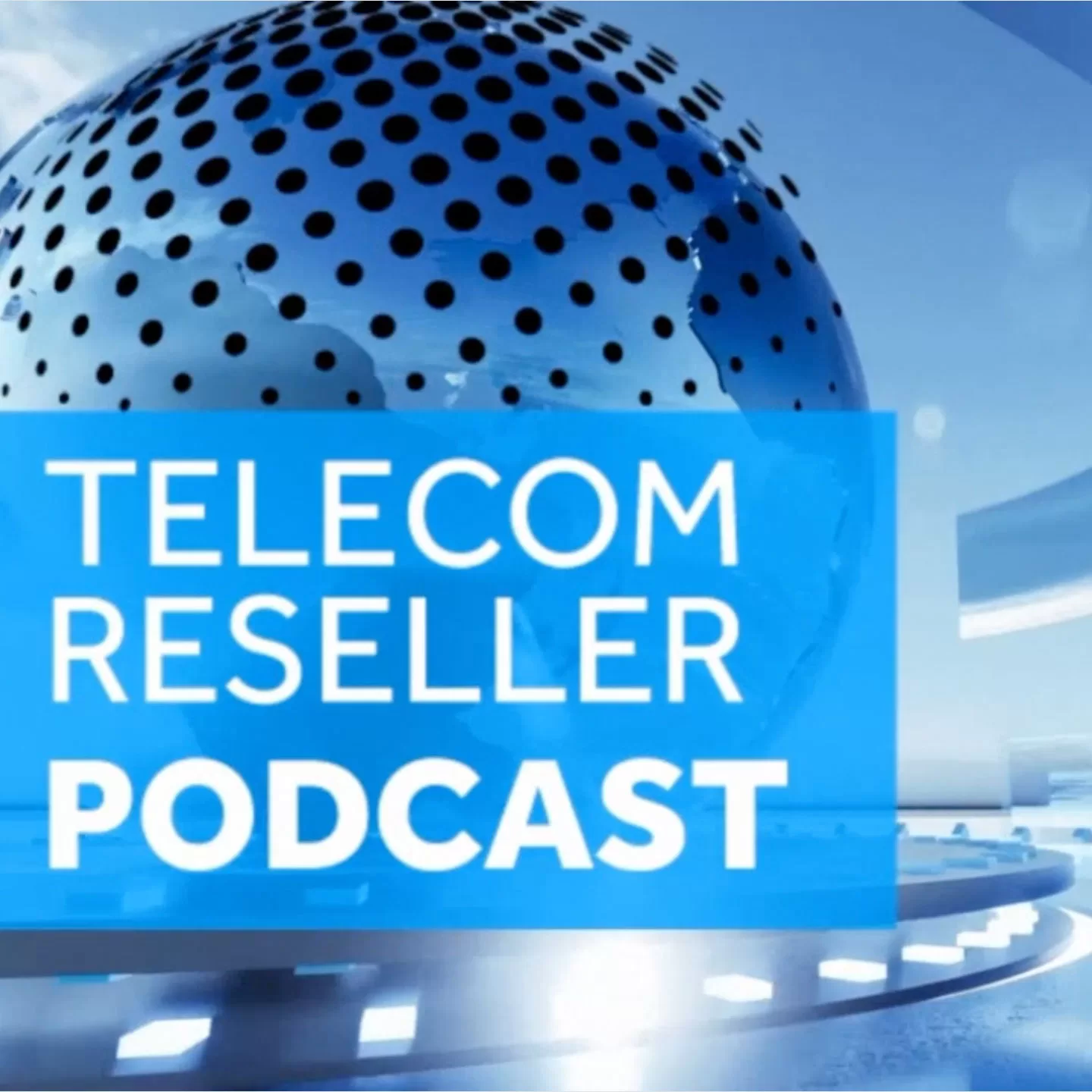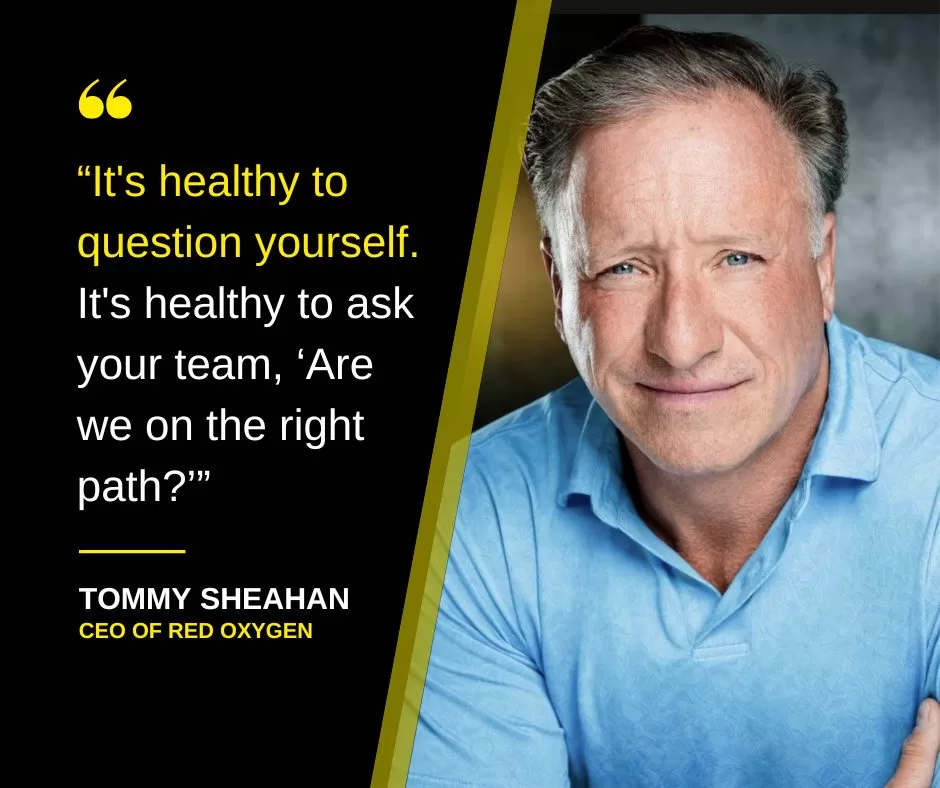Micheal Bertoni Of the SaaS Pulse Show and owner of SaaS Talent interviews Tom Sheahan, CEO of Red Oxygen to find out how Tom knew SMS was the industry for him, his origin story, and journey to co-founding the Red Oxygen.
Learn about the current SMS regulations, the bodies that govern it, and how this leads to questions and conversations about digital regulations.
Transcript:
Michael Bertoni:
3, 2, 1.
Welcome to the SaaS Pulse Show. My name is Michael Bertoni and I’m the founder and CEO of SaaS talent. And I’m so excited today. I have a great longtime tech company, 27 years, right Tom?
Tom Sheahan:
I mean, it’s, it’s 24 something. Sure.
Michael:
He, he’s, I dunno if you could call him a startup anymore. Tom Sheahan.
Tom:
I was eight when I started it.
Michael:
He’s been a startup for 27 years. (Tom corrects the year in the background: 24) Tom Sheahan, he’s the CEO of Red Oxygen who basically invented SMS messaging platforms.
Right. So, you know, all those text messages you get when they’re integrated, you get these text messages from SaaS companies and tech companies. A lot of ’em are probably using Red Oxygen.
So it’s, it’s great to have you here, Tom.
Tom:
Great to be here.
Michael:
Yeah. So, great. Let’s jump right into it. So everybody has a superhero backstory, Tom, and I bet you have one. I I know you have a superhero backstory. So what I wanna understand is what brought you to your company?
I mean, you’ve been there 27 years now. (Tom corrected in the background: 24) How did you come up with the idea? Like, how did this all happen? Think back.
Tom:
Alright, so I’ve always been in the interactive communication market. So when I first got outta college, I was selling semiconductors to startups. And one of my startups hired me called InterVoice. They had bought a company called Bright Systems. And so they did the IVR, you know, “press one for your account balance”. This is for the internet, right? That’s how old I am. Right. You know, enter your account number. We did voice recognition too.
Michael:
You look great.
Tom:
Exactly. And, um, yeah, I’ll get send you the check later. Um, and I was working in Australia. Um, I was opening the Australian/New Zealand arm and, um, I fell in love with text messaging. I, I thought it was a great way to deliver information.
And I was actually working on a project, um, for Foxtel, uh, the Fox cable arm in Australia. And they were spending $8 to send out a late, “Hey, we’re canceling” notification, “we’re canceling your cable”.
Michael:
Right.
Tom:
And I, this is 98 99, and I fell in love with text messaging as delivery service. And I said, why don’t you send ’em a text? Right. This is cheaper and blah, blah, blah. And, and, and, um, and I also wanted to do something with reoccurring revenue.
Um, and I was also working with British Telecom and a telecommunications provider in Australia that British Telecom was reselling the InterVoice/Bright platform. And, and they were getting a recurring revenue.
So I came up with the idea of being able to send a text message from an application from Outlook. And so I got my development team, Tim Hunt and some, some other developers together, and we built Red Oxygen.
The first Red Oxygen was allowing to send a text message from Outlook to the person’s phone and the person can reply back into Outlook.
Michael:
Awesome. Awesome.
Tom:
And this was before the carriers even open up their SMSCs. So we literally had a laptop with a bunch of Nokia 5110s hanging off of it because the SMSCs had not opened up their SMPP interfaces.
And, um, and, and, and that’s how it started. And, and we thought we’d sell this to the mobile operators and we initially got some traction with Swisscom and Vodafone and, and Bline and Bitte and so forth. And, and we got some traction.
We thought that was gonna be our distribution model. And then we kind of realized pivoted again, thinking that, hey, you know, we’ll just build amazing off the shelf components for Outlook or Gmail or Excel or SharePoint and people come to us to send from an existing application. Right. And there is a market for that, but we’ve always kind of stayed away from the API realm because we didn’t have something unique. We couldn’t be “hey, we’re the cheapest”. Um, and that’s kind of a race to the bottom, the Twilio and Plivo and Bandwidths of the world.
But now, 2022 roll back for 22 years now, the carriers have set up a new regulatory body called The Campaign Registry, which is requiring every application to person messaging to be registered with this governing body.
You have to register your EIN, your DBA. That is, that is up, that’s run up against the IRS database. What is your address? What is your website? Hmm. Do you have privacy policy on your website? What is the content of your message? Who are you texting? Why are you texting, blah blah, blah.
Micheal:
Wow.
Tom:
And you are vetted. So you gotta pay a vetting fee. And then after you are approved, then you gotta pay a monthly campaign fee. Then you gotta pay a per message fee to the carriers, right? In addition to your traditional CPaaS provider, whether it’s Twilio or Red Oxygen or Sinch or whoever.
And, and this is incredibly complex. The bigger players sending millions of messages, the, the Ubers of the world, you know, the, you know, they’re gonna be fine because they have compliance people, they have delivery people, they can manage this.
It’s all the SMBs that are buying their text messages from their software vendor, from their CRM software vendor.
Michael:
Mm-Hmm.
Tom:
This CRM software vendor either has to write a Red Oxygen management system and billing engine and delivery engine, or they need to partner with us. Because if you don’t and you’re not compliant, your traffic’s gonna get blocked. And this is happening today.
Michael:
Sure.
Tom:
You’re, and you may not even know your traffic is getting blocked. Right. Because what happened early on in the industry, the Twilio’s, you know, you drive down the Highway 101 in Silicon Valley,and what do you see ‘Twilio ask your developer’. Right? And they’ve done a fantastic job. I’m not saying anything disparaging at Twilio. I love Twilio, but that developer doesn’t give a rat’s ass about compliance or billing. They just said, ‘Hey, I got it to work’. I got 10 other projects I gotta work on. Right?
Michael:
Right.
Tom:
So the awareness needs to happen around this issue. And also how are they gonna pay for this? So now all of a sudden your text messaging bill, maybe you got, you’re an ISV and you were spending five bucks a month per user per month. Right now it’s 20 bucks a month by the time you throw out campaign fees, um, carrier fees per message fees and so forth.
So, we’ll, hey, hey, give us your customers. Give us your thousand doctor’s offices. We’ll make sure every doctor’s office is Campaign Registry compliant. We’ll make sure they get a campaign registry ID we’ll make sure their message content is compliant. We’ll do a message content audit. Right?
So one thing, the campaign registry is like, ‘Hey, do you have a privacy policy on your website’? We’ll help ’em with that. ‘Do you have an opt out?’ If you have a URL in your message do it relate to the brand, and if it doesn’t make, you can’t put a Bitly URL on there. Right. And and they will block you. I mean, they block one of our customers, they’re kind of well-known in the us they’re called Harvard. Right. They’re gonna block Harvard, they’re gonna block you.
Michael:
Right.
Tom:
Right. And another problem you’re gonna have to do is we’re gonna help manage your throughput. Right. So if in T-Mobile will, will, will manage through throughput and put throttling at 2,500, AT&T will throttle it based on the campaign, we’re gonna help you manage this process.
Another thing, T-Mobile has floated, they haven’t done this, but they wanna fine users $250 if they don’t use our network every 60 days. Well, what network, what doctor’s office, dentist’s office, gym restaurant is gonna know zero. Right?
I mean, we are also lobbying to get the FCC to take this over because you’re seeing, you know, industry regulations, they’re just making stuff up. Right.
Michael:
Right.
Tom:
As they go along. We need to get some consistency. We need to get some transparency. And we’re also seeing blocking in certain industries, right?
Like the marijuana industry’s legal in California. Well, they’re not allowed to use the networks. Right? Well, it’s legal business, they pay taxes. Right. But they’re being discriminated against. Right.
So, um, you know, it, there’s, there’s lots of things that we, that there’s a lot of landmines in here. We’re here to help. We know this better than anybody else because we’ve been doing longer than anybody else. Yeah.
Michael:
Right. Great. Yeah. That’s the one thing, the one thing that I, when I talked to you, Tom, I remember the problem is so big. How do you, how do you focus on customer? Like, so there’s so many customer segments. I mean, in my mind, I’m thinking everybody has an SMS problem.
Tom:
Sure.
Michael:
Big companies, small companies. You could talk to the, the vendors you could work with the software providers. Like how do you focus? Like, or where are you focused, like in terms of your market?
Tom:
Well, right now we’re just busy getting to AWS ’cause right now our traffic, we’re maxed out. We’re having record revenue, record traffic. But we literally can’t take on any more customers right now because our legacy system under Oracle can’t handle the traffic. Right. So, right. We’re we’re almost there. Almost there. Almost there. Almost there.
Michael:
Nice.
Tom:
And, but then we’re gonna partner, you know, we’ve, we’ve set up a formal partnership with Telnyx. We we’re, we’re working on partnerships with Bandwidth and Twilio. Uh, and we’re also working with, with these ISVs and you know, I mean, you know, trade shows like SaaS Open and SaaStr need to be broadcasting this from the high tops. Like, ‘’Hey, this is happening. This is going to affect 90% of your people attending this market. Right?
Michael:
Mm-Hmm.
Tom:
This, this trade show. So we’re working with them. We’re trying to do a bit more PR, we’re trying to do more podcasts like this to educate the market of the complexities of the need and how we can help.
Right. So, um, but you know, the media right now is all focused on TikTok or iMessage. Right. You saw the, the lawsuit against, um, uh, or the banning the potential banning of TikTok.
Right. Um, and, and, and there, there a lot of the anger is, is the fact that it’s owned by the Chinese. Right. Okay. Fair enough. But did you know The Campaign Registry is owned by the Indians? Right? I mean, so I mean, if, if we’re gonna have these conversations, let’s have these conversations and let’s set some ground rules about digital regulation.
And if you’re gonna classify text messaging as a data service, well, isn’t Twitter a data service? Isn’t Facebook a data service? Are they gonna be held liable and accountable for their customer’s content? And we are and they’re not. Where’s the fairness in that?
Right. And then what if they send the messages via what WhatsApp? Right. Which is a Facebook product. Right. So I mean, there needs to be, we need to have this conversation. We don’t need to be targeting individual companies or individual applications. We need to have a broader conversation and set some standards, whether it’s text messaging, TikTok, or, um, you know, iMessage. Like let’s have these conversations.
Michael:
Yeah. I mean it’s, it’s amazing to me. It’s amazing to me ’cause you’ve been doing it, you know, doing it for like 27 years. What I’m trying to understand is, I mean you’re, you’re obviously the industry leader, right? Are there, are there other
Tom:
Not revenue? No, but we’re, so
Michael:
How does that work? What are the competitor like? So I’m trying to, trying to, I was trying to understand.
Tom:
I mean, and I mean, the promise is, the promise is, so a lot of ’em you know, got VC funding. We never received outside funding. So, so we’re a lot smaller than, um, a lot of people. We’ve all had a lot of different knowledge set and different skillset, you know.
But, we’ve also been selling to the SMBs for 24 years, right. So we get their problem, we get how they get confused. We get these end users. So, you know, the market’s shifting, we’re ready for it. Um, and, and we look forward to a fantastic, um, 20 later, half of 2024 and and 2025, uh, because we think it’s gonna be a blowout year for us.
But also, you know, let’s have these conversations. Right? Yeah. Let’s, you know, and, and, and it is, is I’m not mad that The Campaign Registry’s requiring this. I think we need to clean up the town square ’cause it’s stopping span, right. And they’re not, you know, fleecing your grandma to saying their Bank of America and you click on the link and they steal your credit card information or whatever. Right?
Um, and, and we need to have these conversations. Um, but this needs to be a broader national conversation and we need to have the FCC involved.
Michael:
Yeah. I mean, so in terms of the competition out there and what you’re doing, you said you’re focusing the SMBs, obviously it’s a lot of, lot of, uh, smaller deals. Do you do through part, like are you, do you have like a large partner channel?
Like is there like a, like how does that Work?
Tom:
Our first partnership is, is, is on Telnyx, right? So they’re a CPaaS provider and they’re going to refer their SMS customers to us.
Michael:
Mm-Hmm.
Tom:
We’ll help ’em get compliant. So whether it’s a doctor’s office software, gym software, dance studio software, give us your customers. We’re also gonna add AI in here to help automate this process. One is to, let’s say they signed up for a two factor authentication message. And, um, someone from shipping starts sending text message, like notifications on shipping. That’s not spam, right? You have a relationship with this person, but it’s not approved in The Campaign Registry. So we would start initiate, the AI would start initiate that campaign registry, uh, certification process, um, and automate that and help automate to make sure that they stay compliant. Um, and, and message verification. So there, this is a good use case for AI. Um, and, and even AI as far as like message auditing or message recommendations.
Michael:
Ah, okay.
Tom:
And, and also because we have millions and millions, millions, billions of message content, we can filter that and build that AI agent better than anybody else because we’ve been doing it longer than anybody else.
So we’ve got, you know, we’ve got history, we can understand what message content is.
Michael:
So the customer that I’m hearing, ultimately that’s why you’re at SaaStr and SaaS Open these places, is ultimately you’re selling to the, to the SaaS, the ISV that, that has messaging SMS built in their platform.
Tom:
Yeah, yeah. Yeah. And they sell that to, you know, the travel agency, the gym, the vet, the dog walker software. Yeah. All of these people.
Michael:
I have an idea, I have an idea for you. I’m gonna probably give you an introduction. So there’s a lot of SEO companies that, like SEO companies that work with niche like doctor’s offices, chiropractor’s, offices, like, and basically they might be able to have a competitive advantage if they offer a solution.
Like I’m, I’m just thinking that I’ll, I’m gonna introduce you to this.
Tom:
No, but the, the only thing is we’ll have to integrate with their software, so whatever their software sending the messages, so,
Micheal:
Got it.
Tom:
I was talking to an investor actually at the SaaS Open last year. Right. And um, I met with, we’re having breakfast, whatever in the open area in New York and, um, was pitching, you know, and this guy comes in, this New York hack, he’s like, “f*****g, hey, yeah, my messages were getting blocked, you know, da da…”.
And I’m like, yes, exactly. The investor’s like, ‘was he a plant?’ I’m like, I swear, no, he wasn’t.
Michael:
That’s funny.
Tom:
Um, but, but I mean, the problem is, you know, Twilio’s selling to the developer Bandwidth is selling to the developer, the same developers, right. And the developer is literally probably deleting their messages.
Michael:
Right.
Tom:
You know, unless there’s a blocking or something’s happening. Like they don’t know. They don’t care. “Hey, it was working six months ago, why am I worried about this? I had literally have 20 other things I need to get done today.”
And so, um, there’s a big disconnect between senior management and the development team. Right?
Micheal:
Right.
Tom:
And because most of those organizations don’t have relationships with other people in the organization, they’re not getting that message through. And so they don’t even know that this is a problem. Right.
And so anyways, this investor group was like, he was trying to pitch, you know, nail salon software and I said, do you, he goes, “do you mean all these nail salons have gotta be registered with this?” Yeah, they do. And the problem is, let’s say the nail salon software has got, you know, text messaging component in it and Janet gets her text message every Tuesday at 10 and she goes in Wednesday at 10. Right. Well, she might even tell the girl doing her nails and say, ‘Hey, I never got the text message’. And the girl will be like, what? ‘I don’t know.’
They have no idea what the text message you. Or they may see a drop in attendance or, or, or they may have more no-shows because they don’t know why. Right. Because they’re not monitoring their text messages because their Yeah.
Micheal:
They don’t know what their software, they have no idea what their software’s doing.
Tom:
They don’t know what their software’s doing. And nor do they care like they’re a nail salon. Right. And the guy who probably wrote the application, if he’s in the United States, right, is he actually looking at this? Or it could have been just a one-off project he did. And he’s off on another contract. Right.
Michael:
Yeah. I mean, I got so many questions. I mean, we’re going through this. You’re, I gotta tell you, you’re one of the most animated, like, you’re like me Tom, like animated best guests I’ve had.
Yes. So In terms of the challenges that you face, so you’re tell the audience, I mean, you have so many challenges. What would you say are the top two or three biggest challenges you faced in your journey and how did you overcome them?
Tom:
Well, you know, when we, well, early on we started, you know, people didn’t know what text messaging was. Right? And I couldn’t even bring it to the United States because the US was so far behind the rest of the world with SMS adoption because of deregulation. Right. So you couldn’t send a network, you couldn’t send a text message from one network to another network.
It’s around 2008, 2009. Right. In fact, I’ll tell you a funny story. So we were on the Microsoft stand at Mobile World Congress in, in, in, in Barcelona. And um, Microsoft heard, oh, they got us in there and they’re like, wow, this is amazing. You know, the Microsoft product manager for office was texting his brother-in-Law in Singapore. And the Singaporean brother-in-law was texting back and he goes, wow, this is amazing. It’s 2003. We wanna, we wanna put this in Bill Gates and Steve Bomber’s desktop and we want to text everybody in the audience. And I said, mm. He says, it works all over the world. I said, yeah, it does, but not Seattle. He goes, what do you mean? Right? He said, no, the US had adopted, you know, TDMA and IDEN and CDMA only voice stream time, voice stream for T-Mobile was the only GSM network there. And there were 1900 spectrum.
So, um, I had to tell ’em, I said, you can install it, but I can’t guarantee, unless I know what network they’re on, it’s gonna show up because you couldn’t text in the United States for like a decade. It’s crazy. It’s crazy. Which, which, which we, we couldn’t, I, even though I’m an American, I started the company, I was right. I couldn’t bring my company here till 2010. 2009. That’s
Micheal:
Amazing.
Tom:
That’s amazing. And, And, and, but we’re seeing this type of regulation, these governing bodies are popping up all over the world. China has one obviously, but India has one, but it’s, it’s on blockchain, which is kind of cool. Singapore is getting one. Australia’s ha getting one, like I’m on, I made some recommendations to the ACMA as far as what I would do differently than what’s happening with The Campaign Registry in the United States. And they’re Aussie so they’ll probably do it better. You know, ’cause they’re probably more pragmatic and they think of things through, we’re like, Yeah. You know, like, mean like, I mean why does T-Mobile gotta find people $250 every 60 days? They don’t use their network. Right. And T-Mobile is worse because they wanted to fine everybody $50. They wanted, they wanted to charge everybody 50 bucks for a set-up fee.
So let’s say you’re on a software company, they, they got rid of that charge, but like, there’s so many inconsistencies, there’s just no, some product manager just pulls this. No, there’s like all these real and ripples and implications to the SMB.
Michael:
So what I mean, so this has been a great, I mean we are, we’re jamming through like 30 minutes here. So what are the two or three biggest piece of advice? Because there’s a lot, there’s a lot of people that are gonna watch this, that are going to, they’re gonna meet early stage startups. Like what’s the, what are the biggest piece of advice you would give these?
Tom:
Best advice I got was get somebody with gray hair that you respect, not only from a business perspective, like, oh, he is rich, he’s well connected. Yeah, yeah. Whatever. Like get some of you respect morally, right? That you think that they are ethically, morally that they’re upstanding person. Right. They’re gonna be there for you.
One of the problems you see as a startup is you, because you, you don’t see the forest from the trees. You know, you, you get so into it and you’re just, ooh. And, and you need that. You need that guidance. So find somebody with gray hair, find somebody with guidance. Find somebody who’s older than you that you, maybe it’s a father and they don’t necessarily have to, you know, hopefully they’re in your industry. Hopefully they can help you with contacts. Um, but they may just be a moral guidance. Right. Um, and, and, and totally. And just a sounding board. So, you know, my parents passed like 27 years ago. Um, so I, I didn’t have that where I couldn’t banter off my father or whatever. So, um, I, I, luckily my advisor’s been, he’s been like my surrogate father. He’s been great. He’s guided me through, you know, tumultuous times with the business and do it. It’s the, it’s if you listen to one thing and you do that and it doesn’t cost you anything. Yeah. Maybe give them some shares. Give ’em a piece of the business. Find something.
Micheal:
We take It, we take it one step further. Like create an advisory board. Right. And it’s like, so important. ’cause you’re, you’re dealing with crap all the time and you need to talk to somebody. I mean like, literally just need to talk to somebody. Totally. I totally agree with you. I mean, you said, I thought you said great hair. ’cause you have great hair. So when you said gray hair, I was like, oh, gray hair.
Tom:
Gray hair.
Micheal:
Gray hair. So Tom, this has been …
Tom:
Yeah. You know, I, and I haven’t had any plugs or anything. Look at this hair.
Michael:
Look at this hair. This guy has. I know man. So Tom, it’s been great. It’s been a great show. Thanks a lot for coming. Stay on for a second. We will. We’ll debrief. So thanks a lot. I really appreciate it and I’m looking forward to, uh, connecting with you more.
Tom:
Great. Thank you.
Michael:
Alright, great.























